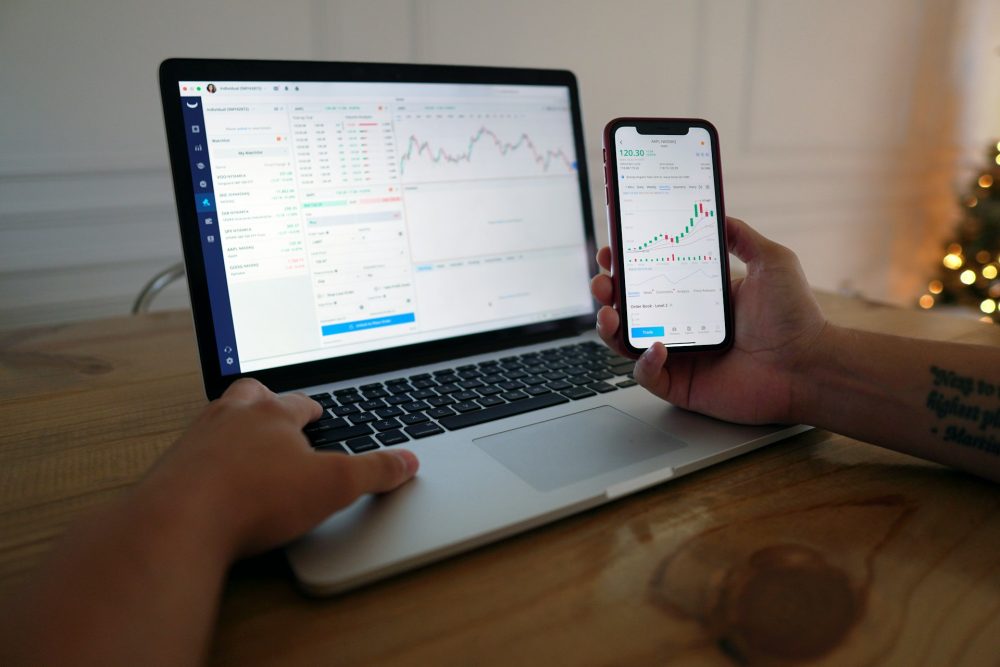Markets
How to gain leverage in the world of corporate venturing
As the future comes faster and faster, venturing is here to stay. In the past, many leaders have viewed entrepreneurs and enterprises as “David and Goliath.” Enlightened leaders are now seeing it as “supply and demand.”

Corporate venturing is a form of financial investing where a large company invests money in a smaller, innovative startup in return for a share of its profits.
I like to use the line “the robots are coming” when I speak about the future. Lately, I’ve noticed that it makes entrepreneurs smile and executives frown.
The frowns are understandable. After all, what’s a relatively slow-moving, billion-dollar-plus company (like yours?) to do? You have to keep making money the old fashioned way whether your business is widgets, health care, insurance or…. But all the while, the executive team is rightly concerned with the imminent prospect of being coldcocked by the future, whether it comes in the form of the Internet of Things (IoT) or some horned-rimmed hipster who is going to disrupt you out of business.
To try to keep up, senior executives arrange field trips to startup centers like 1871 in Chicago, the Capital Factory in Austin, Packard Place in Charlotte, and the valley! They must visit Silicon Valley to breathe deeply the air of innovation.
They come back to their boardrooms committed to driving a culture of innovation and vow to create a venturing arm so they, too, can put some chips on the table of the future.
Five common reasons why corporate venturing fails:
Silicon Valley emergency
Here’s a fact: It is easier to take the risks necessary to be innovative when things are going well. Steady or growing profits are like wind in the “sales” of companies. It gives leadership the courage to take calculated chances and provides political cover for them when those risks don’t pan out.
Unfortunately, profits also can make leaders drunk with confidence. Why change when things are going so well?
So, typically, executives dive into the deep end of the venturing pool when business is starting to turn for the worse. Too late. This hesitancy results in a lack of sustained top management support as everyone in the company begins to fight for resources, battle over expenses and looks for ways to bolster the shrinking bottom line. What happens next? You guessed it. The venture fund (and team) is mothballed as the company returns to focusing on the core business.
The lesson: Start your venturing group when business is strong.
Why are we doing this again?
For most large companies, venturing is a hedge against future problems. It is used for research first and moneymaking second. The underlying idea is that you can either invest in a technology that may otherwise disrupt you out of business or build a strategy that is informed by what you learn from your venturing group.
But too often there is a conflict between financial objectives and strategic ones.
For example, many companies will hire a professional VC to manage their venturing group. This executive has been trained to deliver a return on capital. So he or she is naturally focused on capital gains—not about gaining competitive intelligence. This leads to the venture group and the innovation or strategy group being disconnected.
The lesson: The mantra of your venture group should be insight first, profit second.
Buzzwords-R-Us
You have probably heard of cyber, big data, digital, mobile, telematics, IoT…and so has your CEO. These are the things that big companies immediately think about when they contemplate the future. So it makes perfect sense that it would be easier to get the green light to invest in a company in one of these categories.
If your venture group is consistently chasing buzzwords—like everyone else you’re paying a higher price than you need to for insights. You’re also likely being distracted by shiny objects that keep you from seeing startups that could really provide you with more learning, immediate benefits and therefore more ROI.
The lessons: First, fish in different ponds. There are entrepreneurs everywhere, not just in technology hubs. Most important: Invest in medicine the patient—that’s you—is ready to take. Your company has issues that need solving right now. Focus on those and not on what is “hot.”
Decisions take too long
One of the great things about large companies is that they have built comprehensive systems to avoid risk. There are checks and balances designed to keep one person or even one department from doing too much damage to the mother ship.
So when it is time to make a decision about making a strategic investment, working your way up to your boss’ boss’ boss to get the green light is not very efficient.
Unlike large enterprises, most entrepreneurs move quickly. Many of them are running on very little capital. So when the opportunity comes to invest in their company, speed provides investors with leverage to make a better deal and be a stronger partner. Large companies are often too slow to get in early on the best deals. In fact, they often miss the opportunities completely.
The lesson: Less is more. Create governance that empowers quick decision-making when the company spots a major opportunity.
The wrong comp model
Anytime costs and benefits accrue to managers who are not tied to the group doing the work, you’ve got a recipe for disaster. Too often, corporate venture groups have compensation structures that look like regular corporate models. Your venture team’s success should be rewarded with an uncapped piece of the pie, not annual bonuses or raises.
The lesson: Strive to create comp models that reward the outcomes you want.
As the future comes faster and faster, venturing is here to stay. In the past, many leaders have viewed entrepreneurs and enterprises as “David and Goliath.” Enlightened leaders are now seeing it as “supply and demand.”
—
DISCLAIMER: This article expresses my own ideas and opinions. Any information I have shared are from sources that I believe to be reliable and accurate. I did not receive any financial compensation in writing this post, nor do I own any shares in any company I’ve mentioned. I encourage any reader to do their own diligent research first before making any investment decisions.

-

 Crypto1 week ago
Crypto1 week agoXRP Poised for a Breakout: Why 2026 Could Finally Deliver the Growth 2025 Delayed
-

 Business4 days ago
Business4 days agoPrecious Metals’ Bull Market Continues
-

 Markets2 weeks ago
Markets2 weeks agoPrecious Metals Surge While Major Indexes Hold Strong Amid Holiday Lull
-

 Africa2 days ago
Africa2 days agoOil Dependence and Economic Resilience: Morocco’s Path to Sustainable Growth


























You must be logged in to post a comment Login